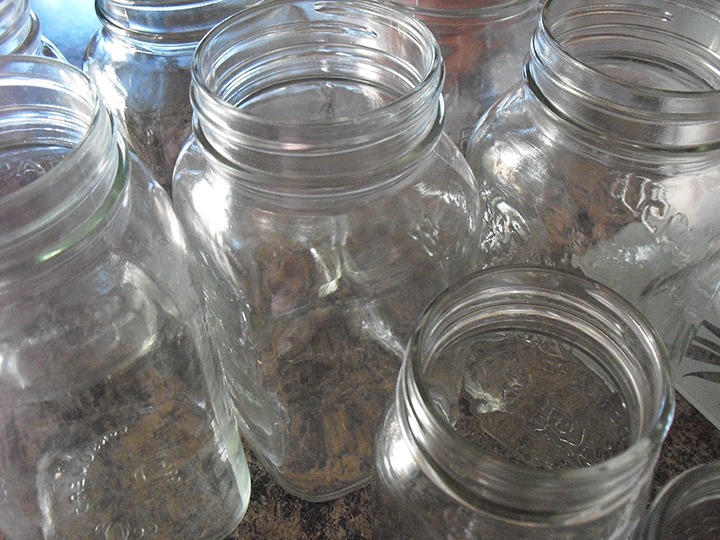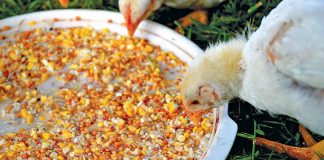| Issue #127 • January/February, 2011 |
I have to admit, I am somewhat of an extreme canner. I love to can unusual thingscanned foods you just don’t find on everyone’s shelves. My latest canning adventures have included everything from canned cheese to canned butter to canned bacon.
|
When I was a young woman, my grandparents would occasionally pack up a huge box full of wonderful treasures and present it to me as a care package. It was so much fun to go through each item and wonder where they could have possibly found such a unique cache of canned delights such as Ethiopian chicken chunks or Hungarian canned bacon. The canned bacon was a special treat because I couldn’t afford such extravagances on my meager salary. I did, however, learn to rinse the bacon quite well, or it was completely inedible due to the outrageously high sodium content.
Years went by, and I forgot all about Hungarian canned bacon, until my husband came across a group buy of canned bacon on a website he frequents. Eager to see if canned bacon was as good as I remembered, we ordered a case.
Our bacon arrived, and it was everything we had hoped for. We loved the fact that it was shelf stable, because, being off the grid, we have very limited refrigerator and freezer space. It was incredibly convenient, as it took only minutes to fry up for breakfast. And, because it was pre-cooked and canned, it was perfect for our long-term food storage goals. There were a few drawbacks, however. First, it was expensive. One case of 12 cans was roughly $120. It was in no way affordable for our large family. Secondly, the bacon, although tasty, was very thin, therefore extreme care had to be taken when removing it from the can and laying it on the griddle to cook. More often than not, we ended up with bacon chunks versus bacon strips.
Armed with the knowledge that it was possible to can bacon and the desire to have a stock of canned bacon lining our shelves, I decided to delve into the process of canning bacon at home. After researching canned bacon through Internet sources and looking in every canning book I owned, to no avail, I decided to pioneer my own method.
Talking to numerous friends who had tried to can their own bacon, only to feed the horrible, greasy, wadded up mess to the dogs, I looked to the cans of bacon I had bought, and liked, to give me a clue how to home can bacon. The main difference between the home canned bacon and the commercially canned bacon seemed to be the paper used to package the bacon and the lack of water added to the can.
|
My first attempt to can bacon met with measurable success. I laid the raw bacon slices out on a large piece of brown paper, folded the bacon in half and rolled the bacon, paper and all, into a large roll that slid right into my wide-mouthed canning jar. I put a sterilized lid and ring on the jar, processed for 90 minutes in my pressure canner and out came beautiful jars of home-canned bacon. The real test came the next morning, when we opened a jar for breakfast.
The jar of bacon had about 1½ inches of juice at the bottom and another inch of grease that had collected on top of that. I opened the jar, tugged at the paper slightly, and the roll of bacon slid right out. It unrolled well, but when I attempted to unfold the paper, the bacon stuck to itself where it had been folded. We had thick half-strips of bacon rather than long, thinner strips of bacon. Although short, they cooked up wonderfully and tasted just like crisp, fresh cooked bacon. Other than the bacon sticking to itself, the experiment had been very successful. Now I knew why the commercially canned bacon had a layer of paper on the bottom of the bacon and another on the top. The top layer of paper keeps the bacon from cooking together while it is canning.
Originally, I had opened up a paper lunch sack and used that to lay the bacon on for canning. Knowing that would not be practical for canning large quantities of bacon, as you had to overlap two bags and then open another two to cover the bacon, my oldest daughter began looking for an alternative. She came up with 12-inch masking paper that you can buy in the hardware store. It comes in a large roll and costs less than $5. It is very convenient to roll out the amount you need. You can also use parchment paper, purchased at a large grocery or specialty store.
A sale on bacon at our local restaurant supply store was the incentive to give canning bacon another try. This time I was even more prepared with experience and the proper supplies.
|
I cut a piece of masking paper about 18 inches long and began laying raw bacon on it, side by side. I have found that thick cut bacon holds together much better during the canning and cooking process. After putting between 12 and 14 pieces of bacon on the paper (averaging 1.2 to 1.4 pounds of bacon) I cut another 18-inch piece of masking paper and laid it on the top of the bacon. I then folded the bacon in half and rolled it tightly into a large roll.
Once rolled, I slid the bacon into a jar, capped it off, and processed it for 90 minutes at 10 pounds of pressure in my pressure canner. Again, it came out beautifully, but the test would still be taking it out of the jar and cooking it up.
Breakfast again, and time for the great bacon test. This time, successit unfolded perfectly with no bacon sticking to itself. I then took the top layer of paper off the bacon. It peeled off nicely. As I began carefully lifting the bacon off the bottom layer of paper, I noticed that it wanted to tear where it had been folded, but most of the bacon stayed together quite nicely. Three minutes later, we had beautiful, crisp, tasty slices of bacon ready to eat.
We now have canned bacon lining our shelves. It is the epitome of a convenience foodready whenever we need a quick meal. No longer do I have to try to finagle freezer space every time bacon goes on sale or thaw it in time for an evening meal. I have it ready at my fingertips. Forget about that expensive canned baconroll your own!





















Linda,
I have done the canned bacon and it is wonderful!! My grandson Nick thinks it is the best thing he has ever ate!!!!! He loves it!!!
tell us how to can butter. Very interested!
Wow, can bacon Can’t wait to try that. Also, tell us how to can butter. Very interested!
I love to can. Thought about canning bacon, but had little reason to do so until of late. With meat prices rising and possible shortage with this new pandemic, we are filling our freezer as we can. Recently had an opportunity to order a box of bacon at a great price. But freezer is full. I took some pkgs of frozen bacon, thawed and canned 6 qts yesterday. I precooked in oven at 350° to remove grease. Baked 10 min or so until bacon was slightly colored and still limp to roll in paper. I did not add maple syrup. Canned as above in qt jars 10#/90 min. Only small small amt grease in bottom of jar, perhaps 1/4″. I did not have any problem with jars floating, as I filled empty space with a water-filled and sealed jar. Who can’t use a canned jar of water on shelf. Just in case! After cleaning and dating jars this morning, I had to open one. The wrapped bacon slid from jar and bacon released from parchment paper perfectly. I am totally impressed at the quality of the canned product. It tastes to me like fresh cooked bacon. I’m not a connissuier, and am anxious to taste test the hubby tomorrow morning. I give this a huge ?!
Why? When you can buy fresh bacon!
I agree with Ela! Wow! That is wonderful to know! I have now canned 30# of bacon but was wondering how long in reality it would last?!
I will mention that I do like the way the thick sliced bacon turns out much better than thin sliced bacon. The 74cents difference is well worth the difference! Always go with the thick cut! Pig on! And hope we never need it!
SueB
So I am on a canning Facebook page and there has been some great controversy over canning bacon. They said it is unsafe to can cured meats and that there are no trusted recipes for this. Before I try this I’d like to know your thoughts please.
I precook my bacon in the oven at 350 degrees for 30 min using four pans and two racks at a time. Bacon should still be pliable for folding/rolling in parchment paper but most of the fat is removed (cooked off). TIP: The jars tend to float so I decided to use the 1 & 1/2 pint jars (taller jars AKA asparagus jars) so I could put glass fermenting weights in the bottom of the jar. Excess bacon grease was able to settled to the bottom of the jar around the weight.
So, parchment paper a quart wide mouth jars, 90 minutes at 10#. Do I have this correct? And Thanks!
mine is 8 years old and is still tastes great
WOW! WOW, WOOWW!!! Awesome!
Thank you for sharing.
I am wondering how long can bacon last preserved this way?